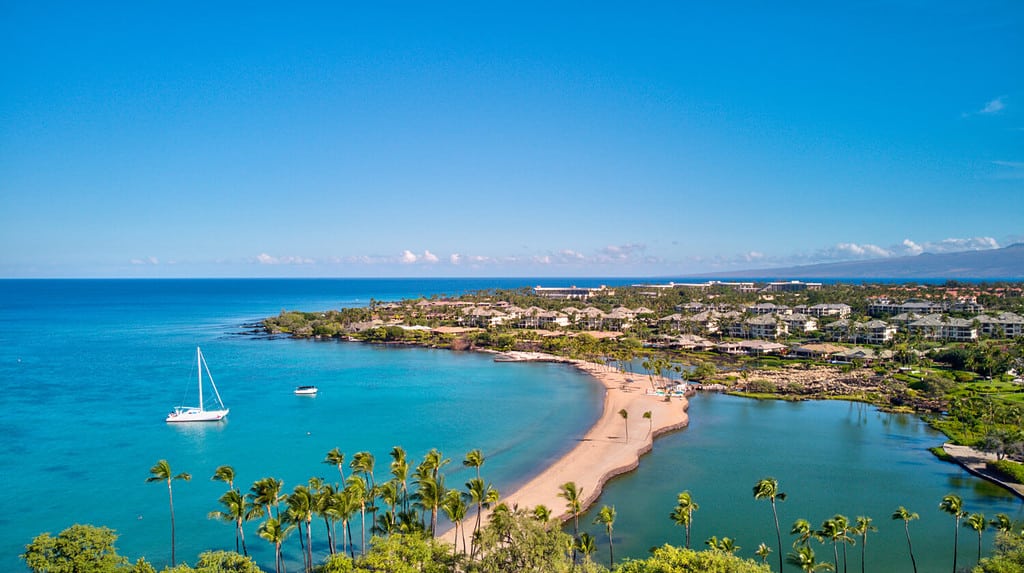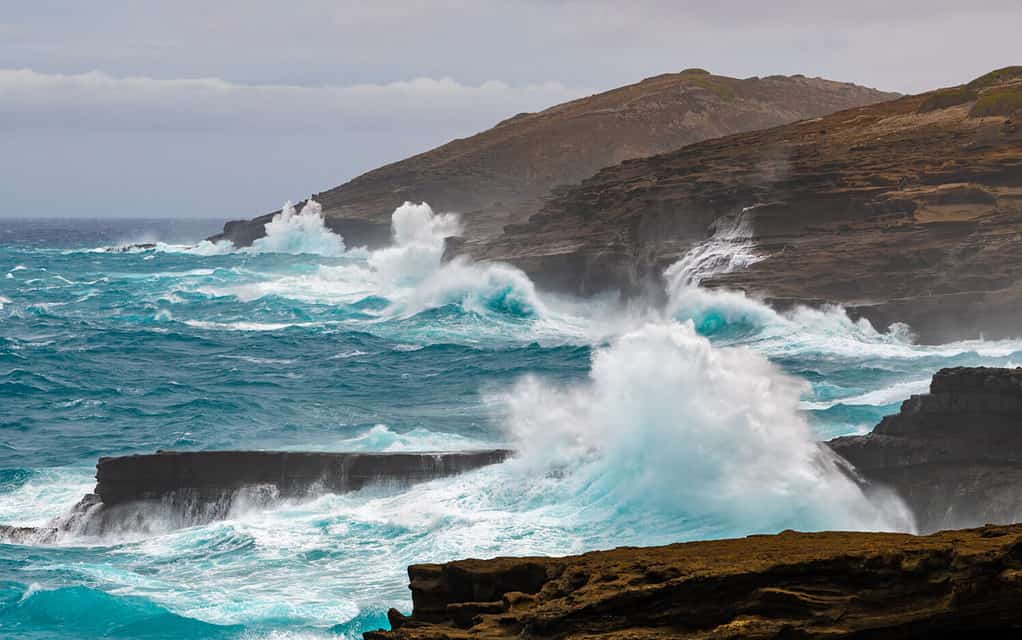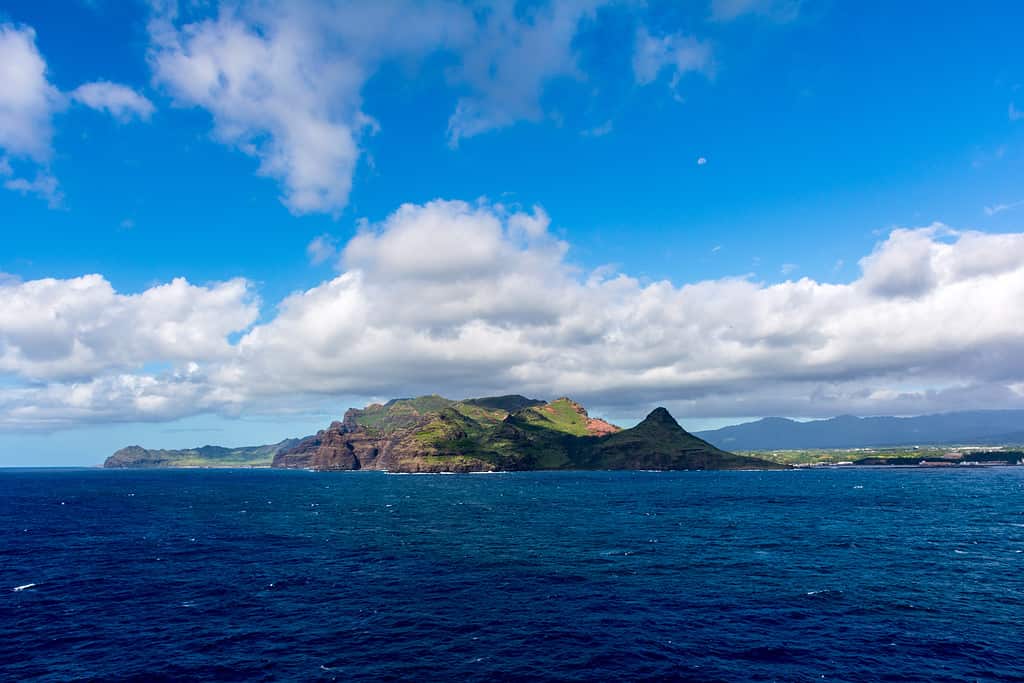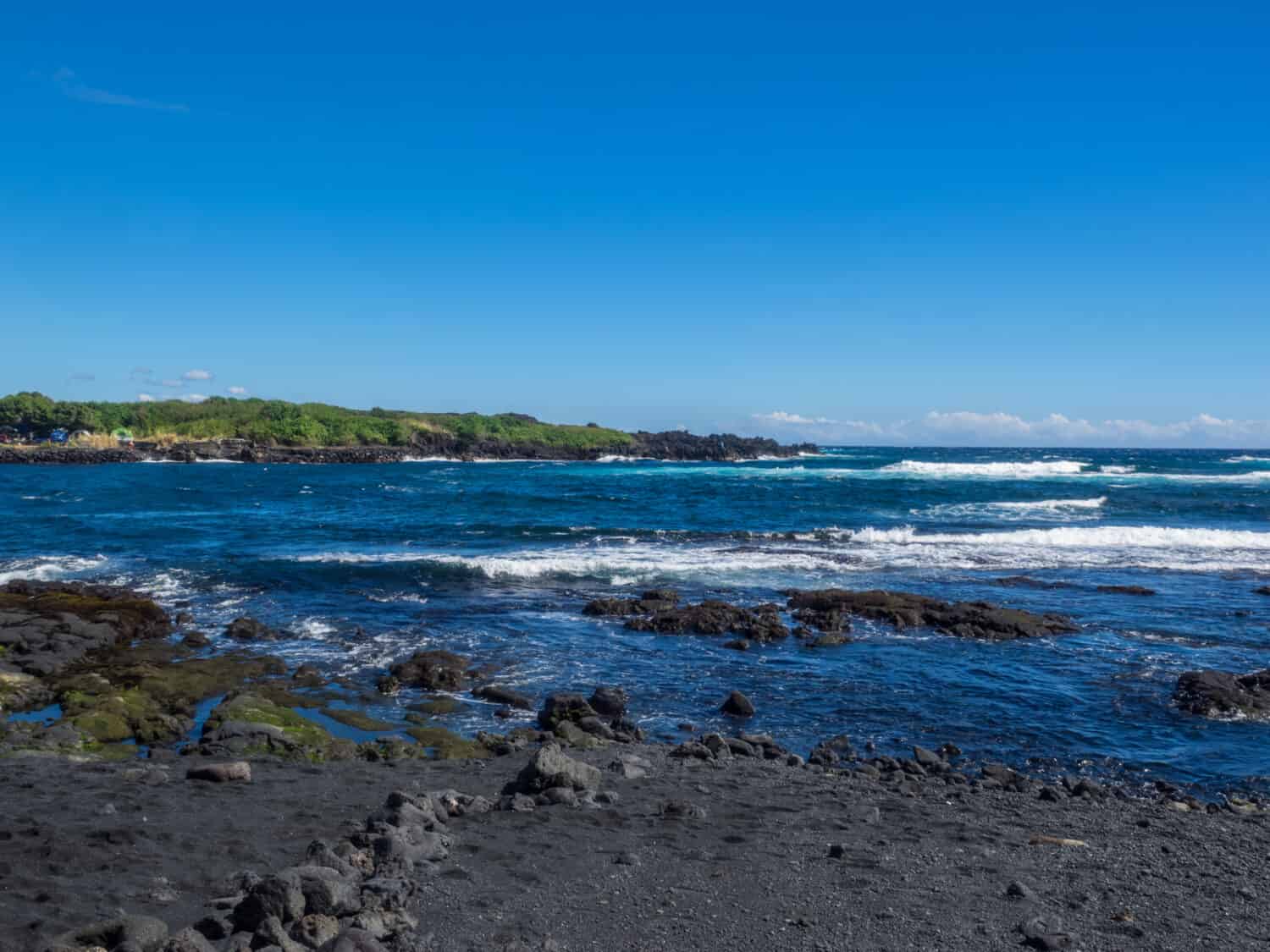When June hits Hawaii, it means summer has arrived, and the masses of tourists come with it. While it is not the hottest month, many visitors believe some of the best weather in Hawaii occurs in June. The oceans are pleasantly warm during this month. However, the warmest months in Hawaii are August and September. But the hottest June in Hawaii’s history was an epic scorcher that confused many residents and visitors. The heatwave didn’t just last a day; it lasted most of the summer. Continue reading to learn more about why Hawaii experienced such a hot June and what they are doing to prepare for the next heatwave.

While it is not the hottest month, many visitors believe some of the best weather in Hawaii occurs in June.
©Kelsey Neukum/Shutterstock.com
Average June Weather in Hawaii
The average temperature in Hawaii is mild to warm all year round. In fact, it feels like the big island only has two seasons, summer (May to October) and winter (October to April). Thanks to the closest continental landmass, 2,000 miles away, and the ocean surrounding the island, the temperature of the sea creates a seasonal lag. Therefore, the warmest temperatures occur between August and September. However, June is more comfortable, with average temperatures between 82 to 86 degrees Fahrenheit.
Unfortunately, Hawaii’s hurricane season occurs between June and November. But, thankfully, the early weeks of June experience the least amount of tropical storms and rain than other months of the year. June is really the best time to visit Hawaii because the days are longer, so people can enjoy long, warm days without suffering from heat exhaustion. However, higher elevations in Hawaii can experience cooler weather in June.

Unfortunately, Hawaii’s hurricane season occurs between June and November. But, thankfully, the early weeks of June experience the least amount of tropical storms and rain than other months of the year.
©MGambill/Shutterstock.com
The Hottest June In Hawaii History
Unfortunately, due to the National Oceanic and Atmospheric Administration not providing average temperatures for this state, there is no way to confirm the hottest June in Hawaii. However, in 2019 Lihue (Kauai), Honolulu, Hilo (Big Island), and Kahului (Maui) saw record highs in June. Therefore, researchers believe this heatwave was the hottest in Hawaii’s history. The hottest temperatures recorded during this summer were 0.3 degrees warmer than the previous record in 2005. For example, the hottest June in Hawaii’s history occurred in Kahului in 2019 when temperatures rose to 95 degrees Fahrenheit four times between June 6 to 27. Researchers believe that the variation in temperature is attributed to higher sea surface temperatures, with weaker trade wind, which allows the heat to rise on the water’s surface.

The hottest June in Hawaii’s history occurred in Kahului in 2019 when temperatures rose to 95 degrees Fahrenheit four times between June 6 to 27.
©iStock.com/okimo
How Does Heatwaves Impact People in Hawaii?
Unfortunately, over the last few years, heat has been to blame for more deaths than any other natural disaster, including floods, hurricanes, and tornadoes. According to a recent study on Hawaii’s mainland, high temperatures cause more deaths than previously thought because hyperthermia is not the only way scorching temperatures can kill people. Heat stroke can cause a number of health issues, including:
- Kidney disease
- Cardiovascular disease
- Respiratory disease
Furthermore, high temperatures in cities trap pollution, causing heart and lung disease. Unfortunately, Hawaii’s temperatures are forecasted to increase by several degrees by 2050, and the people impacted the most will be homeless and low-income households.
When residents and visitors need to cool off from the heat, they use one of the island’s many beaches, stay in air conditioning, or sip on cold beverages to stay hydrated.

According to a recent study on Hawaii’s mainland, high temperatures cause more deaths than previously thought because hyperthermia is not the only way scorching temperatures can kill people.
©Phillip B. Espinasse/Shutterstock.com
Did the Hottest June in Hawain History Impact the Environment?
Sadly, the rising temperature of the waters surrounding Hawaii can harm the algae living inside corals. Because the coral depends on this algae for food, decreasing supply can eventually kill the coral. When the coral is malnourished, it turns white, so the process is called coral bleaching. Unfortunately, this process is becoming more common and occurred from 1996 to 2002 in the north-western Hawaiian Islands.
Furthermore, heatwaves in Hawaii have been linked to coral disease outbreaks. But heat is not the only factor that affects coral; ocean acidity also causes damage to corals, shellfish, and other aquatic life that depend on the water’s minerals to build their shells and skeletons. Unfortunately, the acidity of the Pacific Ocean has skyrocketed by around 25% in the last 300 years, and there is a good chance it will increase by 40 to 50 percent by 2100.
Global warming and acidity can cause widespread damage to marine ecosystems in Hawaii. This could be devastating as the state is home to a wide range of fish species not found anywhere else in the world. However, these fish rely on healthy coral reefs, and even with the population trying to cut out greenhouse gas emissions. Sadly, a large portion of coral reef fish could potentially lose their homes by 2100.
Lastly, reefs are also essential in protecting nearshore fish feeding grounds and nurseries. As a result, the damage caused by reduced fish populations and coral will have a negative impact on Hawaii’s economy. These natural resources are worth an estimated $385 million through direct consumption, tourism, and commercial fisheries.

Sadly, the rising temperature of the waters surrounding Hawaii can harm the algae living inside corals.
©iStock.com/Marcin_P_Jank
Preparedness and Response
Luckily, the Governor and Legislature of Hawaii are committed to meeting the goals of the Paris Climate Agreement. Therefore, they have created the Hawaii Carbon Farming Task Force and Hawaii Climate Change Mitigation and Adaption Commission. These task forces are assigned to develop strategies to adapt and mitigate climate change impacts.
Furthermore, the State Department of Land and Natural Resources and the Nature Conservancy are also addressing climate change. For example, these departments teamed up with the US Forest Service and others over the past two years to have carbon emissions absorbed by Hawaii’s forests, which qualified under domestic and international standards. In addition, Hawaii is taking the next step in pilot reforestation projects to demonstrate the state’s economic viability and carbon sequestration capacity of forest restoration.

The Governor and Legislature of Hawaii are committed to meeting the goals of the Paris Climate Agreement. Therefore, they have created the Hawaii Carbon Farming Task Force and Hawaii Climate Change Mitigation and Adaption Commission.
©iStock.com/ReDunnLev
The Hottest Recorded Temperature Ever in Hawaii
Hawaii’s hottest temperature ever recorded occurred on April 27th, 1931, in Pahala. This is a massive difference since the average April temperature for Pahala is approximately 68 degrees Fahrenheit. Pahala is a quaint town with a population of roughly 1,350 residents. Furthermore, it is situated on a scenic plateau of land in the Kau district of the Big Island, around 900 feet above sea level.
Pahala has breathtaking mountains and ocean views, along with several interesting restaurants, shops, and a golf course. During its early days, this little town was strictly a sugar cane producer and only had plantation homes, a sugar mill, a managers’ house, and a general store. However, in the 1940s, the Pahala Theater was built with several other structures. This made the small town a focal point of the northeastern Kau district. Unfortunately, the plantation and sugar mill closed in 1996, but Pahala has diversified its agricultural opportunities, including developing coffee farms, macadamia nut orchards, and flower farms. In fact, Kau Coffee is notorious and won a few coffee-tasting awards.

Pahala has breathtaking mountains and ocean views, along with several interesting restaurants, shops, and a golf course.
Image: Mariusz S. Jurgielewicz, Shutterstock
©Mariusz S. Jurgielewicz/Shutterstock.com
The photo featured at the top of this post is © iStock.com/mihtiander
Thank you for reading! Have some feedback for us? Contact the AZ Animals editorial team.







